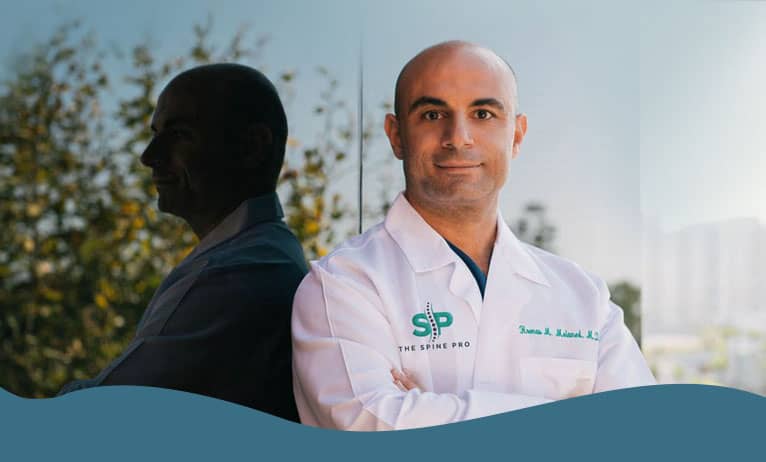
What is Degenerative Joint Disease?
Degenerative joint disease is just another phrase to describe osteoarthritis. Your cervical, thoracic and lumbar regions of your spine are composed of 23 intervertebral discs, 24 vertebrae and 48 facet joints. Your facet joints help make your spine a wonder of flexibility. They are also prone to osteoarthritis, the most common form of spinal arthritis.
Degenerative joint disease produces an immune response that degrades the healthy cartilage and soft tissues located at the joints. This arthritic process forms osteophytes that become bone spurs which form along the facet joints. The bone spurs can narrow foraminal openings and cause spinal stenosis. Some researchers view osteoarthritis as the primary cause of degenerative disc disease including bulging and herniated discs and age-related spondylosis.
How common is degenerative joint disease of the spine?
Osteoarthritis of the spine is quite prevalent. Estimates range from 40% to 85% of the US population have some form of osteoarthritis of the lower spine. Currently, an estimated 27-million patients are adversely affected by osteoarthritis(1). The consensus among researchers is that most arthritis is derived from genetics, so blame your parents, not your high school football coach.
How does arthritis of the spine affect the “Three-Joint-Complex” of the spine?
The human spine is a masterpiece of flexibility that has helped us evolve as highly mobile and nimble hunters. One of the keys to our success as hunters is our ability to stand and turn in almost any direction at a full run which is greatly facilitated by the flexibility and strength of our spine which weighs less than a pound. One of the biomechanical wonders of our spine is the three-joint-complex that is repeated along our cervical, thoracic and lumbar spine. This flexible spine unit consists of the vertebrae, the facet joints, and the intervertebral discs which are linked together by ligaments and supported by muscles along the spine.
Spinal osteoarthritis attacks the hinges of the three-joint-complex, especially the facet joints. There are two facet joints on each side of the vertebrae. The cartilage and ligaments of these protective bones develop synovitis which triggers the body’s immune system to generate histamines that cause inflammation. The immune response leads to bone spurs and facet joint syndrome. As a result, adjacent intervertebral discs begin to weaken and herniate. Gradually, over the years, a strong, flexible skeletal system becomes unstable and painful.
Is there a cure for degenerative joint disease?
It is sobering for doctors to say this, but there is no cure for spinal osteoarthritis. Often, when treatment begins, the most critical issue is managing chronic pain. Acetaminophen will reduce pain while the nonsteroidal anti-inflammatory drugs (NSAIDS) such as aspirin, naproxen and ibuprofen will treat pain and inflammation.
For intense pain, some doctors may prescribe opioid-based pain relievers and muscle relaxants. Dr. Melamed’s conservative treatment will avoid opioids and treat the chronic pain with a combination of holistic alternatives such as acupuncture, Tai-Chi, yoga, Pilates, and structured, low-impact, exercise programs, including water therapy with pool-based resistance training. Acupuncture and epidural corticosteroid injections may also be components of Dr. Melamed’s treatment plan.
Dr. Melamed understands the psycho-social component of degenerative joint disease and is accustomed to working with his patients’ therapists, psychiatrists and loved ones to develop the optimal treatment plan for their lifestyle. Part of Dr. Melamed’s lifestyle plan may include suggestions for a new diet to reduce weight, control stress and fight inflammation. If you are a smoker, he can help you kick the habit as well.
For those patients who do not respond to non-surgical therapies, Dr. Melamed may request imaging tests such as X-rays, myelograms, magnetic resonance imaging (MRI) and computed tomography (CT) scans. All appropriate surgical options will be reviewed carefully, especially if spinal stenosis worsens, incontinence occurs, or walking becomes difficult. The most common surgeries for spinal arthritis are vertebral fusions and cervical and lumbar microdecompression treatments such as microlaminectomies and microlaminotomies. All of Dr. Melamed surgeries are opioid-free which reduces the risk of drug dependency in the future.
Start controlling your pain today.
Click on the “Make An Appointment” button at the top of this page, or call Dr. Melamed’s office for more information. Call us at 424-21-SPINE.
References:
1. Low Back Pain and Lumbar Spine Osteoarthritis: How Are They Related; A. Goode, T. Carey; Curr Rheumatol Rep. 2013 Feb; 15(2): 305.doi: [10.1007/s11926-012-0305-z]
2. Arthritis and Arthroplasty, Edited by F. Shen & C. Shaffrey, Pg. 24, Elsevier Health Sciences



